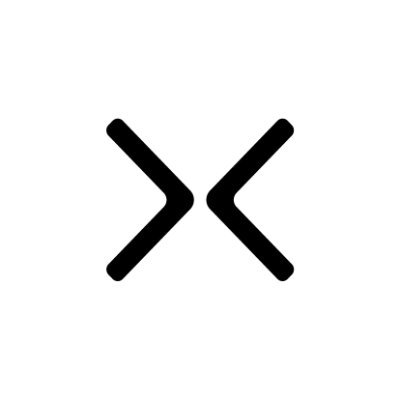Financing of 15 million USD, launching the L3 expansion plan Momoka, how far is Lens Protocol from an explosion?
Author: Grapefruit, ChainCatcher
Recently, the news of Lens Protocol raising $15 million has made it a focal point in the crypto community once again. This round of financing saw participation from many well-known figures in the crypto industry, including Uniswap CEO Hayden Adams, OpenSea co-founder Alex Atallah, former Coinbase CTO Balaji Srinivasan, Sandbox co-founder Sébastien Borget, and Polygon co-founder Sandeep Nailwal.
Such significant funding and the backing of numerous top figures in the crypto industry should have helped Lens Protocol regain its reputation. However, the reality is quite the opposite. This project, which claims to be a leader in Web3 social networking, has fewer than 3,000 daily active addresses (UAW).
According to DAppRadar data, the average daily active users of Lens Protocol over the past week is around 2.9K. Currently, there are 118,000 registered Profile NFTs on Lens Protocol, and the number of participating wallet addresses has exceeded 100,000, with daily active addresses accounting for less than 3%. This is a stark contrast to Web2 social applications like Twitter and Weibo, which boast daily active users in the hundreds of millions.
Some opinions suggest that Lens Protocol has already achieved remarkable results as a decentralized protocol that has been live for less than a year. Additionally, the Profile NFTs are not fully open to users, and the official team has paused new applications, hindering new user entry. When the official registration is reopened, daily active users are likely to see explosive growth. Currently, more attention should be paid to the project team's actions and initiatives regarding the product.
Since announcing its launch on the Polygon mainnet in May 2022, Lens Protocol has been around for over a year. What is the current operational status of Lens Protocol? What new developments have occurred in the product? How is the ecosystem developing? Can the number of daily active addresses become an important criterion for evaluating the quality of Web3 social applications?
Lens Latest Progress: Launch of L3 Scaling Solution Momoka , Rapid Growth of Ecosystem Projects
In fact, since the beginning of 2023, Lens has been very active. In addition to announcing significant funding this month, it has also initiated a new governance proposal (LIP) and established standards for data integration or access within its ecosystem. In May, it announced the launch of the developer toolkit Lens SDK, allowing developers to embed social-related information into applications with just a few lines of code without requiring blockchain knowledge. In April, it launched the L3 scaling solution Momoka, which can handle a large number of transactions off-chain on the Polygon network. In March, the floor price of its Profile NFTs skyrocketed, surpassing 200 USDT. In February, the official Twitter account hinted at an airdrop, which, although quickly deleted, still attracted attention.
However, in terms of product development, the most significant progress in the first half of 2023 was the launch of the L3 scaling solution Momoka, which will open a new narrative path for Lens Protocol, making it a true infrastructure for building Web3 social applications.
As an open-source, composable decentralized social media infrastructure, Lens Protocol modularizes the main processes or functional components of social scenarios, providing developers with modules such as "Profile NFT, Follow NFT, Content NFT, Collect NFT," offering a complete chain from creators to content to consumers. These elements are the foundation of social media platforms. Developers can freely use these foundational components to build social products.
However, for social applications with high-frequency interaction needs, the efficiency and cost of processing each interaction become important criteria for evaluating whether a Web3 social application is user-friendly. Currently, the performance of blockchain networks (such as throughput and speed) is not suitable for deploying large-scale social DApps, which can lead to network congestion and skyrocketing gas fees.
Take Lens Protocol as an example; it is built on Polygon, and whenever there is a peak in user traffic, the Polygon chain becomes congested, causing gas fees for posting and liking to soar, greatly affecting user experience.
Momoka is a scaling solution based on Optimistic L3 designed to address this need, officially launched in April this year. Several Lens ecosystem applications have participated in testing, and it is now available in a beta version for Lens developers.
The so-called L3 is relative to Polygon (L2); Momoka is used to scale Polygon. Its principle is to process and compute transactions on the Polygon chain off-chain (Momoka) to achieve massive scaling and reduce transaction costs. However, Momoka does not use the L2 scaling solution like Ethereum to compress transactions for storage on L1 (Polygon) but instead sends transactions to a data availability layer (DA).
This is mainly because decentralized social networks only need to ensure that users can control their data content. For instance, Lens Protocol allows users to own and control their digital identity, social graph, and related social images, videos, and text. Storing all this data on the mainnet would waste precious on-chain space resources. Momoka entrusts this data to third-party storage platforms like Bundlr Network and Arweave, ensuring that users can access and retrieve this data at any time, optimizing data storage costs while achieving the higher scalability required by social media networks.
In the Momoka network, there are mainly two roles: Submitters and Verifiers. The former is responsible for validating transaction data and constructing data submissions to Arweave, currently managed by whitelisted addresses designated by Lens. The latter monitors the validity of the data submitted by Submitters and confirms it, allowing anyone to use Momoka nodes as Verifiers to prove and validate transactions.

Currently, the transactions supported by Momoka include publishing content, commenting, and mirroring. According to Momoka Explorer, as of June 27, there have been 298,000 completed transactions on Momoka, with a total on-chain transaction cost of only $100.

Additionally, Momoka is designed as a node network and can serve as a general data scaling solution, supporting use cases beyond social networks. This also opens new opportunities for the development of Lens Protocol, such as becoming a dedicated on-chain data processing layer and building new social logic based on on-chain data.
Now, in addition to the product, the Lens Protocol ecosystem is flourishing. According to the Lenverse page, there are currently over a hundred applications developed or integrated based on Lens, covering tools, DAOs, communities, images, games, music, videos, and more.
According to the Lens ecosystem projects displayed on the crypto data platform Rootdata, notable applications include the decentralized social media platform Lenster (similar to Twitter) developed by Lens, the platform Phaver for sharing content and earning tokens, and LensFrens, which recommends Profiles based on users' Web3 footprints; the decentralized video platform Lenstube; the task platform ORB; and the AI image generation tool LensAI.
User Growth Stagnates and Daily Active Users Decline After Pausing New Profile NFT Minting
Despite Lens Protocol's ongoing efforts in product development, the performance in terms of user activity data is not ideal. According to Dune platform data, the current daily active wallet addresses (UAW) are around 2.9k, with approximately 15,000 transactions occurring daily, around 5,000 posts published daily, 1,500 comments, and about 4,000 shares.


This starkly contrasts with Web2 social applications that boast hundreds of millions of daily active users and shows a significant gap compared to CyberConnect, which has around 50,000 daily active users during the same period.
The reason daily active user numbers are under scrutiny is that, compared to the existing real user base, the proportion of active users on Lens Protocol is not high. Among them, Profile NFTs serve as user identity representatives in the Lens ecosystem, recording social data such as posts, comments, and mirrors generated based on their accounts. According to the official browser Lenscan, approximately 118,000 Profile NFTs have been minted, and the number of participating wallet addresses is nearly 110,000. Based on this data, Lens Protocol has over 100,000 users, but currently, the proportion of daily active addresses is less than 3%, and the frequency of social interactions among users is extremely low.
Looking at the trend of user activity data, the number of active users on Lens Protocol has not always been this low. The platform was most active in February, March, and April of this year, maintaining around 15,000 daily active users, with daily posts reaching around 40,000 and daily transaction numbers peaking at over 400,000. Since April 27, daily active data has plummeted, with daily active addresses hovering around 3K. This is primarily because Lens Protocol paused the minting application for Profile NFT whitelists.

Currently, users can only acquire a Profile NFT by purchasing it on the secondary market, with the current floor price at 160 USDC.
From this perspective, the pause in new Profile NFT minting applications has hindered new user entry, leading to a stagnation in user growth. This is why some users are not worried that Lens Protocol currently has only a few thousand daily active addresses.
However, many users have reported that the experience of using Lens Protocol-related products is not smooth. Posting, following, and even liking or sharing each require paying on-chain gas fees, which is very unfriendly for high-frequency social interactions and detrimental to user engagement. This is not only an issue faced by Lens Protocol but is a challenge that the entire Web3 social application space needs to address.
Regarding the current few thousand daily active users of Lens Protocol, crypto user Lina stated that maintaining a few thousand daily active users in a Web3 application is actually a good achievement. Having hundreds or thousands of daily active users is very common in Web3 applications, while applications that can maintain over ten thousand daily active users are rare. The metaverse project Decentraland, valued at over a billion, was once pointed out to have only 38 active users within 24 hours, and its current daily active users are around 400. Moreover, Lens has only been live for a year and has many areas for improvement and enhancement, and it has not fully opened to users yet. The current daily active data should be considered its lowest point for the future. Whether Lens Protocol can realize its dream of becoming a Web3 social kingdom will depend on the efforts and persistence of the official team, developers, community users, and others.














